Ever stared at your BMW’s glowing service light, puzzled about what it means or how to silence it? This small yet glaring icon can seem like an enigma wrapped in a riddle.
You’re not alone. Most of us have been there – gazing at the mysterious symbol that silently insists something needs attention under the hood.
In this guide, we’ll unravel this mystery together and show you how to reset a BMW service light. We’ll shed some light on identifying the dashboard signpost, decoding error codes, diagnosing potential problems causing its stubborn glow, replacing parts if necessary, troubleshooting tips for sticky situations and maintaining a regular schedule to prevent future hiccups with your ride’s health indicator.
So buckle up as we set off on this journey into our car’s secret language!
Mastering the Reset of Your BMW Service Light
Your BMW’s service light is a valuable tool that alerts you when your vehicle requires attention. However, once the necessary maintenance has been performed, you may wonder how to reset it. Let’s delve into the process.
1. Kickstart the Reset Process
The first step in resetting your service light is to switch on the ignition without starting the engine. Then, press and hold the trip reset button located in your instrument cluster until an exclamation mark inside a triangle appears.
In certain BMW models, you may need to navigate through different options using either the steering wheel buttons or the iDrive controller. Once you see the ‘reset’ option, confirm by pressing ‘OK’ or holding down the trip reset button again.
2. Tackling Troubles During the Reset Procedure
Sometimes, the reset procedure may not go as anticipated. If your car doesn’t respond as expected when attempting to silence the service light signal, there’s no need to panic. Before seeking professional help from your local authorized dealer, there are a few tricks worth trying.
You could try rebooting your entire vehicle – often, simply restarting can resolve minor electronic glitches. Additionally, ensure that all doors are properly closed, as open doors may interfere with the resetting procedure in some models.
3. Maintaining Your Vehicle Post-Reset
Silencing that pesky alert successfully isn’t the end of the story. It’s crucial not to forget about any required maintenance tasks that were initially associated with the warning. This will ensure that both the performance and longevity of your BMW remain top-notch.
Keep in mind, though, that simply turning off the alert does not address any underlying issues your BMW may be experiencing. It only temporarily silences the alert until the next maintenance cycle is due. Therefore, it’s essential to carry out all necessary servicing after resetting for optimal performance and prolonged vehicle life.
Spotting the Service Light on Your BMW
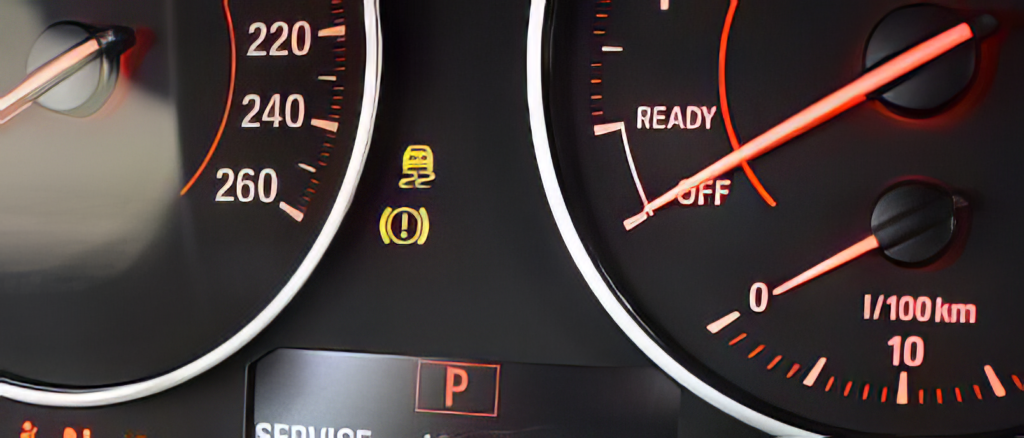
The service light on your BMW dashboard is a helpful indicator that keeps you informed about your car’s maintenance needs. Consider it as a personal assistant reminding you when it’s time for an oil change or tire rotation.
Understanding the meaning of each light is crucial for maintaining the performance and safety of your BMW.
Different Lights, Different Meanings
The dashboard lights in your BMW are not just for show; they are color-coded to grab your attention. Yellow lights indicate non-critical servicing requirements, while red lights indicate urgent issues that require immediate professional attention.
- An engine icon suggests a potential issue with the performance or emissions system.
- A gas pump symbol indicates low fuel levels.
- A battery symbol hints at charging or electrical problems.
- An exclamation mark inside a gear denotes transmission faults.
Services lights can vary from oil change reminders to brake pad wear to more significant issues within the vehicle.
Brief vs Constant Indicators: What They Tell You?
Some warning lights are triggered by specific conditions and will go off once the issue is resolved, such as low windshield washer fluid. However, there are indicators that remain lit until the associated problem is fixed either through manual reset methods or diagnostic tools provided by professionals, such as those found at your local BMW specialist.
| Light Type | Icon | Description | Possible Causes | Action Required |
|---|---|---|---|---|
| Temporary Indicator |  | Lights up due to certain conditions, like low windshield washer fluid. Goes off once the issue is resolved. | - Low windshield washer fluid - Sensor malfunction | Top up fluid if low. If light remains on, consult the manual or seek professional help. |
| Persistent Indicator | 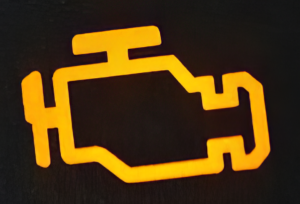 | Indicates a potential issue with the performance or emissions system. | - Engine malfunction - Sensor errors - Emission system issues | Immediate professional attention needed. |
| Persistent Indicator |  | Indicates low fuel levels. | - Low fuel - Fuel sensor malfunction | Refuel as soon as possible. If light stays on after refueling, consult manual or seek professional assistance. |
| Persistent Indicator | 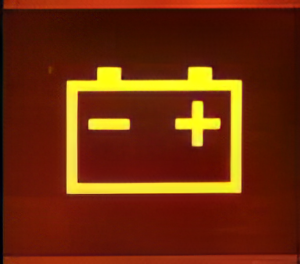 | Hints at charging or electrical problems. | - Dead or dying battery - Alternator issues -Electrical system malfunction | Check battery charge level. If issue persists, seek immediate professional attention. |
| Persistent Indicator |  | Denotes transmission faults. | - Transmission malfunction - Fluid level low - Sensor issues | Check transmission fluid levels. If issue persists, seek immediate professional attention. |
| Temporary Indicator | 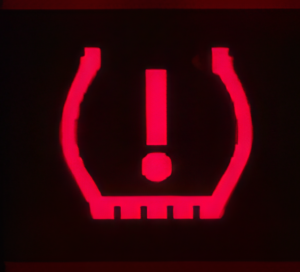 | Indicates one or more tires may have low pressure. | - Tire puncture - Sensor malfunction - Seasonal temperature fluctuations | Check and adjust tire pressures. If light remains on, consult the manual or seek professional help. |
| Persistent Indicator | 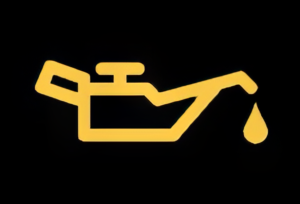 | Reminds about the need for an oil change. | - Extended time/mileage since last oil change - Oil level or quality issues | Schedule an oil change soon. If light remains on after oil change, seek professional assistance. |
Checking for Error Codes
When the service light on your BMW starts flashing, it’s time to check for error codes. This process is crucial in diagnosing any issues that might be causing the warning light.
The world of car diagnostics can seem daunting, but don’t worry. We’re here to help you navigate this terrain smoothly.
OBD-II Scanner: Your Diagnostic Companion
An On-Board Diagnostic (OBD) scanner is a handy tool that connects directly to your vehicle’s system and reads trouble codes stored within it. These scanners are widely available from online retailers.
The key point here? You need an OBD-II scanner as these are compatible with all modern vehicles including BMWs. It’s your ticket to unlocking those pesky error codes.
Finding Your Vehicle’s OBD Port
Your next step involves locating the OBD port in your BMW. Typically found under the dashboard near the driver’s side door, its location may vary depending on the model and year of your ride.
A Deep Dive Into Scanning For Error Codes
To scan for error codes, connect the scanner into the port and turn on your car without starting it, then follow the instructions provided by the manufacturer of your scanner.
- Error messages will pop up as alphanumeric code(s). Each one corresponds with a specific problem which could range from minor sensor failures to major mechanical problems.
Demystifying The Error Codes
Puzzled by what these codes mean? Don’t fret. You can look up the meanings for these codes on reliable online resources dedicated to OBD error code interpretation.
By understanding what these codes mean, you’ll be better equipped to tackle any issues your BMW may have and reset that service light effectively.
Maintenance Schedule

Keeping your BMW in top shape is all about sticking to a regular maintenance schedule. It’s the best way to prevent service light issues and enjoy smooth, trouble-free rides.
The beauty of it? You can manage most of these tasks yourself with just a bit of guidance.
Oil Changes: Your Engine’s Best Friend
Your engine oil isn’t something you want to overlook. Regular changes every 5,000 to 7,500 miles or annually if you’re not clocking up those miles help keep things running smoothly.
This simple task could save you from unexpected service light warnings and costly damage down the line.
Tire Care: More Than Just Rubber on Road
Tire rotations and inspections should be part of your routine every six months or between 6,000-8,000 miles driven.
And let’s not forget tire pressure levels and tread depth – they’re key for safety as well as performance.
Fluid Checks: Not All About Oil
Apart from engine oil, there are other fluids that need attention too, like brake fluid. Aim for checks twice per year or follow the guidelines provided by the BMW owner’s manual.
Maintaining correct fluid levels prevents unnecessary strain on vehicle systems, which might otherwise trigger that pesky service light warning signal.
Scheduled Service Visits: Prevention Is Better Than Cure
In addition to at-home care practices, a visit to an authorized BMW service center for regular check-ups is a smart move. You should be scheduling regular visits to an authorized BMW service center every 10,000 miles or annually.
These visits include comprehensive inspections covering all aspects of your vehicle’s health and are another great way to avoid unexpected service light warnings.
FAQs in Relation to How to Reset a Bmw Service Light
- What does the BMW service light indicate? The BMW service light is a dashboard indicator that informs the driver about required maintenance or potential vehicle problems. It acts as a reminder for various services such as oil changes, tire rotations, and more serious vehicle issues.
- How do I reset my BMW service light? To reset your BMW service light, first, turn on the ignition without starting the engine. Press and hold the trip reset button on the instrument cluster until a triangle with an exclamation mark appears. In some models, you may need to use steering wheel buttons or the iDrive controller to navigate to the ‘reset’ option and confirm the reset.
- Is turning off the service light the same as resolving the issue that caused it to come on? No, turning off the service light only stops the alert. The underlying issue requiring attention may still exist. It’s important to perform all necessary maintenance or consult a professional to diagnose and fix any problems.
- How do I understand what my BMW dashboard lights mean? BMW dashboard lights are color-coded: yellow lights suggest non-critical service requirements, while red lights signify urgent issues needing immediate attention. Specific icons, such as an engine or gas pump symbol, provide further clues about the nature of the problem.
- What tools do I need to diagnose why my service light is on? An On-Board Diagnostic (OBD) scanner is helpful for reading trouble codes stored in your vehicle’s system. These codes help identify specific issues that may have triggered the service light.
- Where can I find the OBD port in my BMW? The OBD port is typically located under the dashboard near the driver’s side door, though its exact location may vary depending on your BMW’s model and year.
- Does ignoring the service light affect my BMW’s performance? Yes, neglecting the warnings indicated by the service light can lead to more serious vehicle issues, potentially affecting the car’s performance, safety, and longevity. Regular maintenance and timely response to service light alerts are essential for optimal vehicle operation.
Conclusion
Understanding how to reset your BMW’s service light becomes straightforward once you’re acquainted with the process. We’ve unraveled the mystery behind that dashboard icon, providing insights into decoding error codes—a vital step towards effectively managing your BMW’s service alerts.
Beyond resetting, it’s essential to diagnose underlying issues to ensure your vehicle operates at its best. Sometimes, this may necessitate replacing parts. And while we’ve shared troubleshooting techniques for challenging situations, nothing beats a proactive approach. By adhering to a regular maintenance schedule, you can sidestep many potential problems. After all, proactive care trumps reactive repair.
With this newfound knowledge, you’re more than ready to confidently navigate and address your vehicle’s needs. Welcome to a more empowered driving experience!
